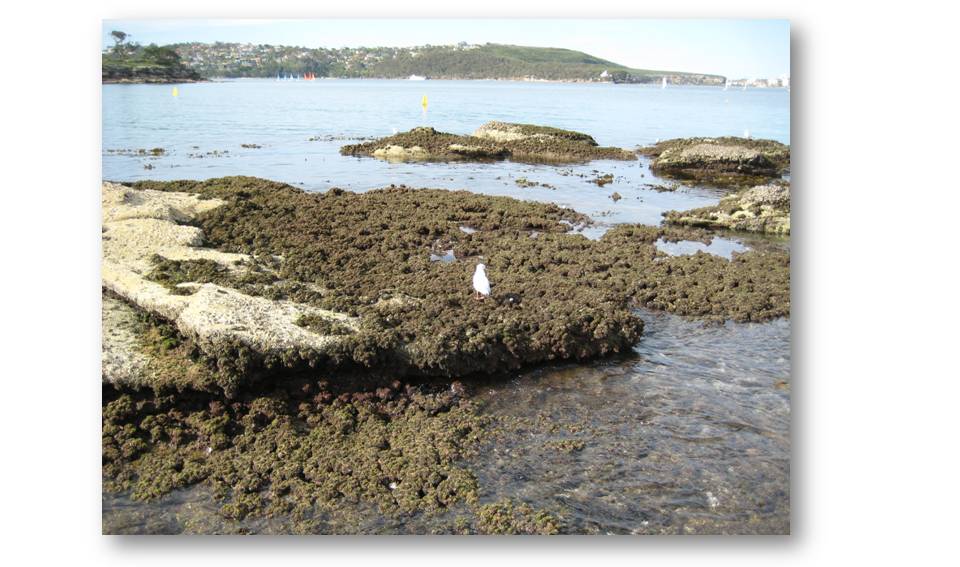Pyura Praeputialis on:
[Wikipedia]
[Google]
[Amazon]
''Pyura praeputialis'' is an

intertidal
The intertidal zone, also known as the foreshore, is the area above water level at low tide and underwater at high tide (in other words, the area within the tidal range). This area can include several types of Marine habitat, habitats with var ...
and shallow water species of tunicate
A tunicate is a marine invertebrate animal, a member of the subphylum Tunicata (). It is part of the Chordata, a phylum which includes all animals with dorsal nerve cords and notochords (including vertebrates). The subphylum was at one time ca ...
. It is one of three species of " cunjevoi" in Australasia (the other two being the yellow cunjevoi ''P. dalbyi'' and the doppelganger cunjevoi ''P. doppelgangera''). It is the first reported species of marine organism to create a "foam-nest" for its larvae.
Distribution
''Pyura praeputialis'' is common in coastal areas of the Australian mainland and ranges from southernQueensland
)
, nickname = Sunshine State
, image_map = Queensland in Australia.svg
, map_caption = Location of Queensland in Australia
, subdivision_type = Country
, subdivision_name = Australia
, established_title = Before federation
, established_ ...
to Cape Otway
Cape Otway is a cape and a bounded locality of the Colac Otway Shire in southern Victoria, Australia on the Great Ocean Road; much of the area is enclosed in the Great Otway National Park.
History
Cape Otway was originally inhabited by the Gadub ...
in Victoria
Victoria most commonly refers to:
* Victoria (Australia), a state of the Commonwealth of Australia
* Victoria, British Columbia, provincial capital of British Columbia, Canada
* Victoria (mythology), Roman goddess of Victory
* Victoria, Seychelle ...
. It is a non-indigenous species
An introduced species, alien species, exotic species, adventive species, immigrant species, foreign species, non-indigenous species, or non-native species is a species living outside its native distributional range, but which has arrived there ...
in Antofagasta
Antofagasta () is a port city in northern Chile, about north of Santiago. It is the capital of Antofagasta Province and Antofagasta Region. According to the 2015 census, the city has a population of 402,669.
After the Spanish American wars ...
, Chile
Chile, officially the Republic of Chile, is a country in the western part of South America. It is the southernmost country in the world, and the closest to Antarctica, occupying a long and narrow strip of land between the Andes to the east a ...
.
This species is an ecosystem engineer
An ecosystem engineer is any species that creates, significantly modifies, maintains or destroys a habitat. These organisms can have a large impact on species richness and landscape-level heterogeneity of an area. As a result, ecosystem enginee ...
that can drastically alter habitats by overgrowing other sessile
Sessility, or sessile, may refer to:
* Sessility (motility), organisms which are not able to move about
* Sessility (botany), flowers or leaves that grow directly from the stem or peduncle of a plant
* Sessility (medicine), tumors and polyps that ...
marine invertebrates
Invertebrates are a paraphyletic group of animals that neither possess nor develop a vertebral column (commonly known as a ''backbone'' or ''spine''), derived from the notochord. This is a grouping including all animals apart from the chordate ...
. This makes it a likely problem species when introduced to new habitats. However, the positive impacts it can have are shelter for juveniles that are being hunted, protection from desiccation, beneficial interactions between organisms, and coexistence of other species. Castilla, J. C., Lagos, N. A., & Cerda, M. (2004). Marine ecosystem engineering by the alien ascidian Pyura praeputialis on a mid-intertidal rocky shore. Marine Ecology Progress Series, 268, 119-130.
Taxonomy
This species is part of the " ''P. stolonifera'' species complex", a group of large tunicates that are all often referred to as ''P. stolonifera'' (a species endemic totemperate
In geography, the temperate climates of Earth occur in the middle latitudes (23.5° to 66.5° N/S of Equator), which span between the tropics and the polar regions of Earth. These zones generally have wider temperature ranges throughout t ...
southern Africa
Southern Africa is the southernmost subregion of the African continent, south of the Congo and Tanzania. The physical location is the large part of Africa to the south of the extensive Congo River basin. Southern Africa is home to a number of ...
). It is also sometimes called "''P. stolonifera praeputialis''". Compared to other species in the species complex
In biology, a species complex is a group of closely related organisms that are so similar in appearance and other features that the boundaries between them are often unclear. The taxa in the complex may be able to hybridize readily with each oth ...
that have onion-shaped bodies, ''P. praeputialis'' is taller, cylindrical in shape and often has a greater diameter at the top than at the base.

References
Animals described in 1878 Stolidobranchia Fauna of the Pacific Ocean {{tunicata-stub